Affiliate links on Android Authority may earn us a commission. Learn more.
OnePlus 6T vs Samsung Galaxy S9 specs comparison: It's closer than you'd think
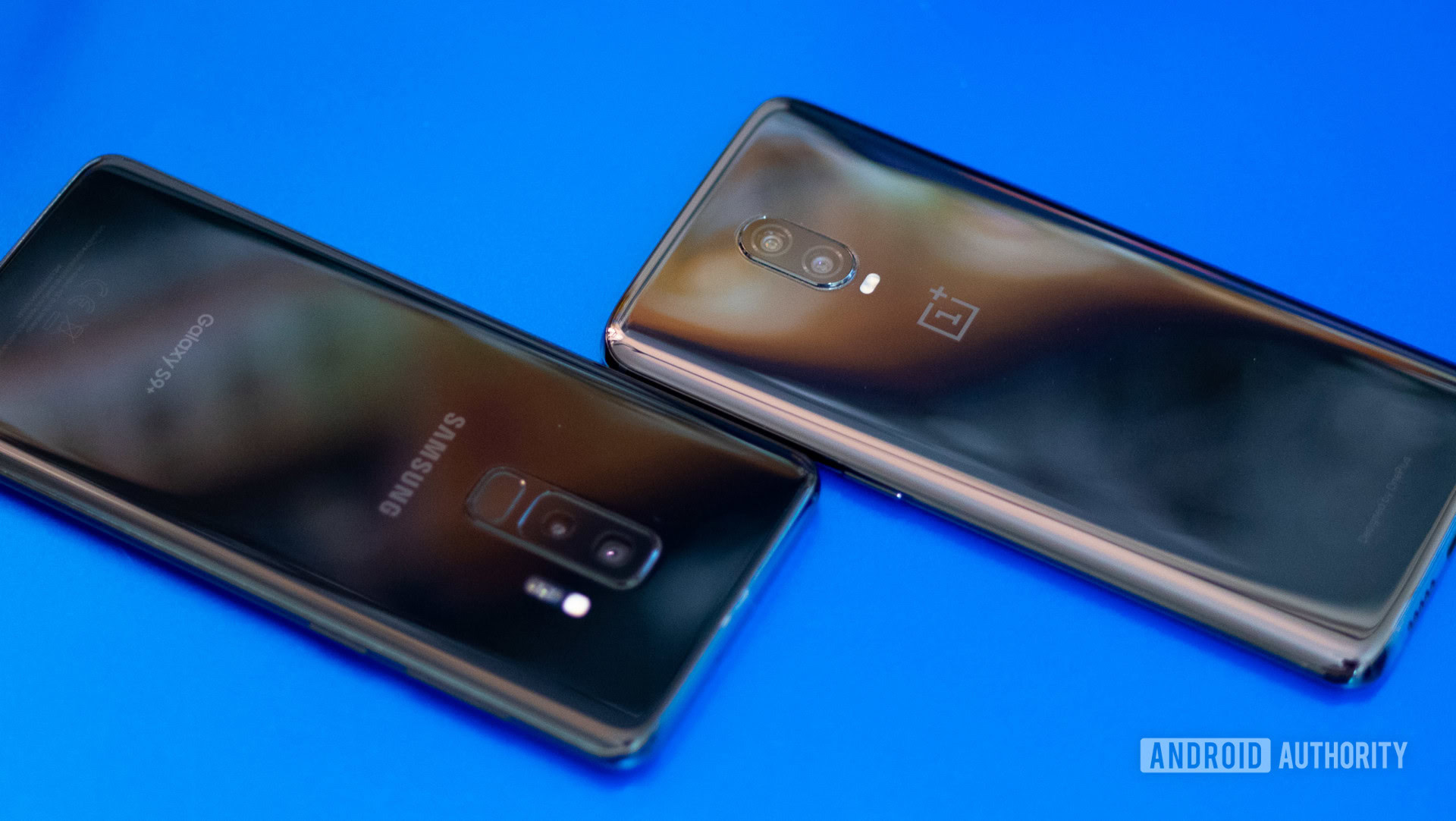
The Samsung Galaxy S9 and S9 Plus may have launched for over $700 back in February, but they don’t cost nearly that much anymore. Most of the time, you can pick up a brand new Galaxy S9 for just $520.
Guess what else costs around that much: The OnePlus 6T.
The Galaxy S9, S9 Plus, and OnePlus 6T actually have comparable specs, and now that their prices are similar, we thought we’d pit them against each other to see which device is worth your money.
OnePlus 6T vs Samsung Galaxy S9 / Plus: Design
The Samsung Galaxy S9 has a smooth, almost organic feel to it. The phone’s subtle curves and smooth edges flow beautifully, generally making it very comfortable to hold. Even in the plus-sized iteration, the Galaxy S9 continues to be very manageable.
The OnePlus 6T, on the other hand, is a large device with a design that refines the standard OnePlus formula. The teardrop style notch helps keep the footprint in check despite the larger display. Meanwhile, the Galaxy S9 and S9 Plus do not have a notch at all.
Don’t miss: Samsung Galaxy S9 review | OnePlus 6T review
You’ll have observed that the OnePlus 6T does not have a fingerprint reader over at the back, which is because it is the first OnePlus device to ship with an in-display fingerprint scanner. In our review, we talked about how it’s a big improvement over first-generation readers, but still feels a bit rough around the edges. The success rate is definitely lower than traditional fingerprint readers. Samsung, on the other hand, continues to have a fingerprint reader at the back. As a bonus, you’ll also find a heart rate sensor and SpO2 sensor along the camera modules.
OnePlus 6T vs Samsung Galaxy S9 / Plus: Specs
| OnePlus 6T | Samsung Galaxy S9 / S9 Plus | |
|---|---|---|
Display | OnePlus 6T 6.4-inch AMOLED 2,340 x 1,080 resolution 19.5:9 aspect ratio | Samsung Galaxy S9 / S9 Plus S9: 5.8-inch Curved Super AMOLED 2,960 x 1,440 resolution (Quad HD+) 570ppi 18.5:9 aspect ratio S9 Plus: 6.2-inch Curved Super AMOLED 2,960 x 1,440 resolution (Quad HD+) 529ppi 18.5:9 aspect ratio |
SoC | OnePlus 6T Qualcomm Snapdragon 845 Octa-core, 10nm, up to 2.8GHz | Samsung Galaxy S9 / S9 Plus Global: 10nm, 64-bit, octa-core Samsung Exynos 9810 (2.8GHz quad + 1.7GHz quad) U.S.: 10nm, 64-bit, octa-core Qualcomm Snapdragon 845 |
GPU | OnePlus 6T Adreno 630 | Samsung Galaxy S9 / S9 Plus ARM Mali-G72 (Exynos) Adreno 630 (Snapdragon) |
RAM | OnePlus 6T 6/8/10GB | Samsung Galaxy S9 / S9 Plus S9: 4GB S9 Plus: 6GB |
Storage | OnePlus 6T 128/256GB | Samsung Galaxy S9 / S9 Plus 64/128/256GB |
MicroSD | OnePlus 6T No | Samsung Galaxy S9 / S9 Plus Yes, up to 400GB |
Cameras | OnePlus 6T Rear cameras Primary: 16MP Sony IMX 519 sensor with 1.22μm pixels, OIS, EIS, ƒ/1.7 aperture Secondary: 20MP Sony IMX 376K sensor with 1.0μm pixels, ƒ/1.7 aperture Front: 16MP Sony IMX 371 sensor with 1.0μm pixels, EIS, ƒ/2.0 aperture | Samsung Galaxy S9 / S9 Plus S9: Rear: Super Speed Dual Pixel 12MP AF sensor with OIS, f/1.5 and f/2.4 apertures Front: 8MP AF sensor, f/1.7 aperture S9 Plus: Rear: Dual camera with dual OIS Wide-angle: Super Speed Dual Pixel 12MP AF sensor with OIS, f/1.5 and f/2.4 apertures Telephoto: 12MP AF sensor, f/2.4 aperture Front: 8MP AF sensor, f/1.7 aperture |
Battery | OnePlus 6T 3,700mAh Non-removable Fast Charge (5V 4A) | Samsung Galaxy S9 / S9 Plus S9: 3,000mAh S9 Plus: 3,500mAh Non-removable Fast Wired Charging compatible with QC 2.0 |
Wireless charging | OnePlus 6T No | Samsung Galaxy S9 / S9 Plus Yes, Fast Wireless Charging compatible with WPC and PMA |
IP rating | OnePlus 6T No | Samsung Galaxy S9 / S9 Plus IP68 |
Headphone Jack | OnePlus 6T No | Samsung Galaxy S9 / S9 Plus Yes |
Software | OnePlus 6T Android 9 Pie OxygenOS | Samsung Galaxy S9 / S9 Plus Android 8.0 Oreo Samsung Experience (Android 9 Pie beta with One UI available) |
Dimensions and weight | OnePlus 6T 157.5 x 74.8 x 8.2mm 185g | Samsung Galaxy S9 / S9 Plus S9: 147.7 x 68.7 x 8.5mm 163g S9 Plus: 158.1 x 73.8 x 8.5mm 189g |
Colors | OnePlus 6T Mirror Black, Midnight Black, Thunder Purple | Samsung Galaxy S9 / S9 Plus Midnight Black, Sunrise Gold, Coral Blue, Lilac Purple |
There’s a negligible difference in weight between the S9 Plus and the 6T. The former weighs 189g, while the latter weighs in at 185g. The smaller Galaxy S9 weighs a feather-light 163g.
Samsung’s Super AMOLED panels are considered some of the best in the business, and it is no surprise the Infinity Display on the Galaxy S9 line offers up some fantastic viewing angles, deep blacks, and gorgeous colors.
The OnePlus 6T continues to use an Optic AMOLED panel that’s a little dimmer than the S9. The screen resolution is lower, topping out at Full HD+ compared to the Quad HD+ panel on the Galaxy S9 and the S9 Plus. Resolution difference isn’t really a concern in day to day use, though it might give the S9 a leg up when using the phone in a VR headset.
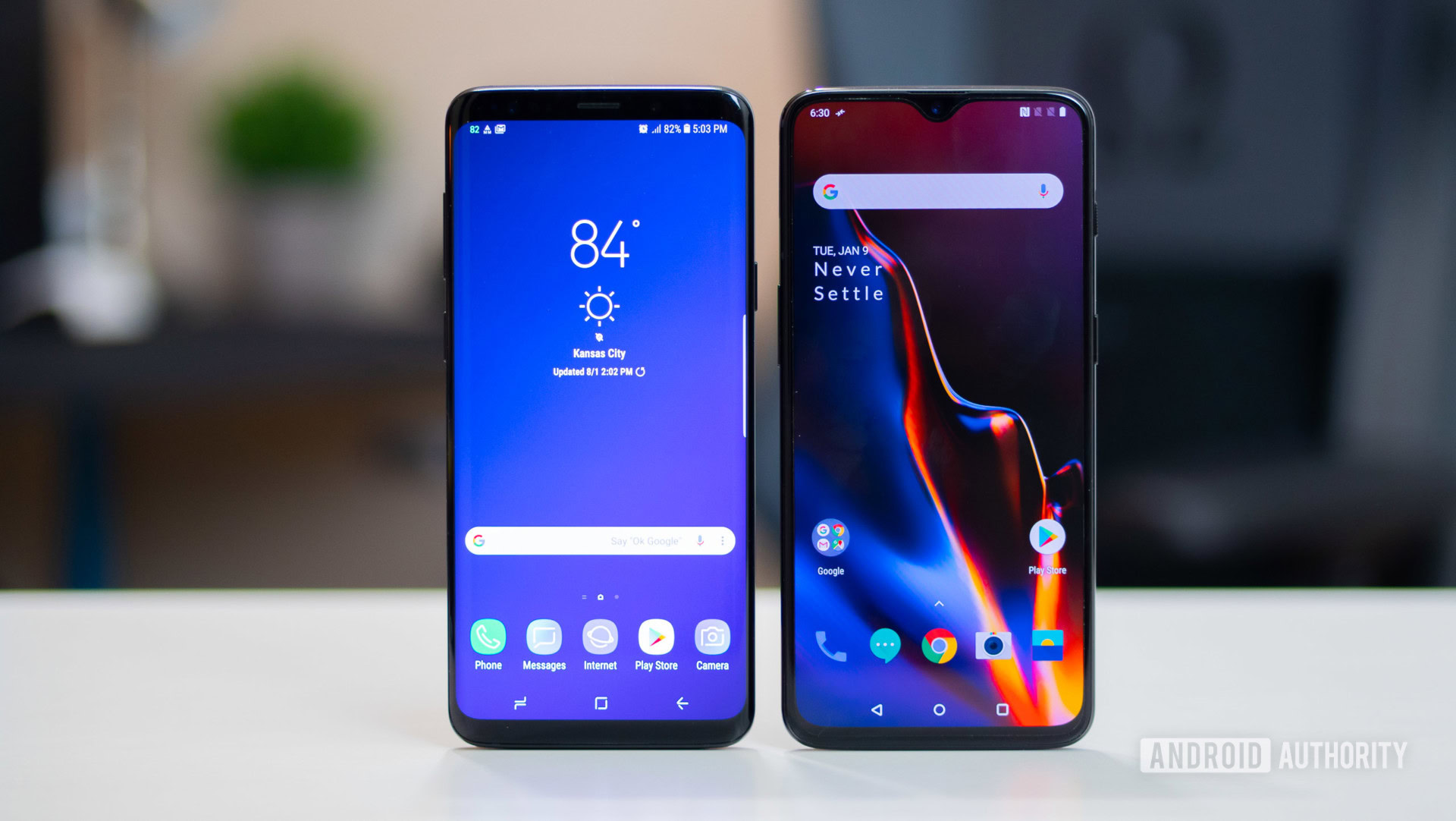
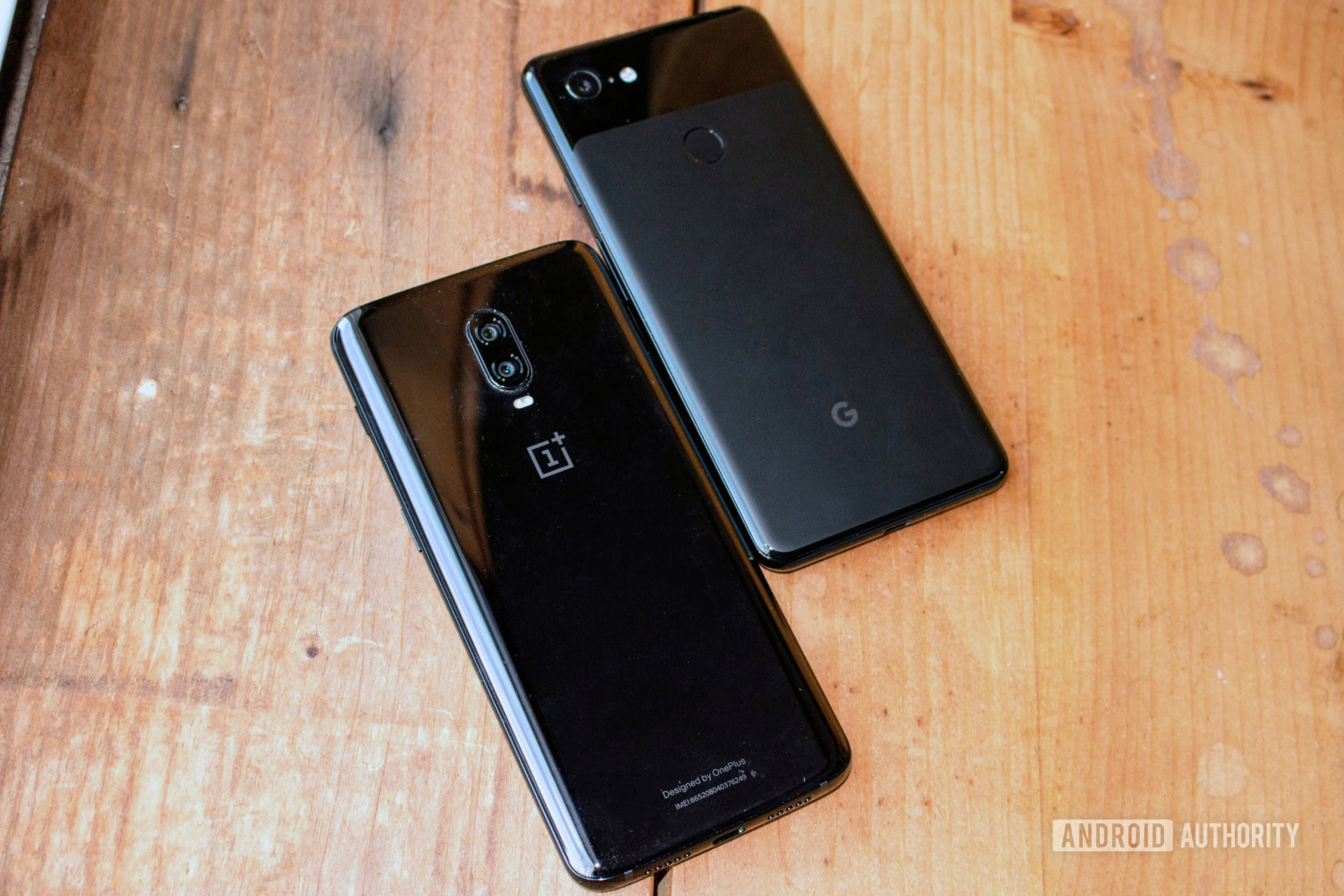
Both the Galaxy S9 and the OnePlus 6T use Snapdragon 845 chipsets in the U.S. In other markets, the S9 ships with an Exynos 9810 chipset, which matches the performance of Qualcomm’s latest. The smaller Galaxy S9 has 4GB of RAM on board and the larger S9 Plus includes 6GB of RAM. The OnePlus 6T has 6G, 8GB or even 10GB of RAM depending on the SKU.
Performance on both the phones is as fast as it gets, but OxygenOS on the OnePlus 6T feels just a bit faster in everyday use. The lighter transitions and animations play a big role in this.
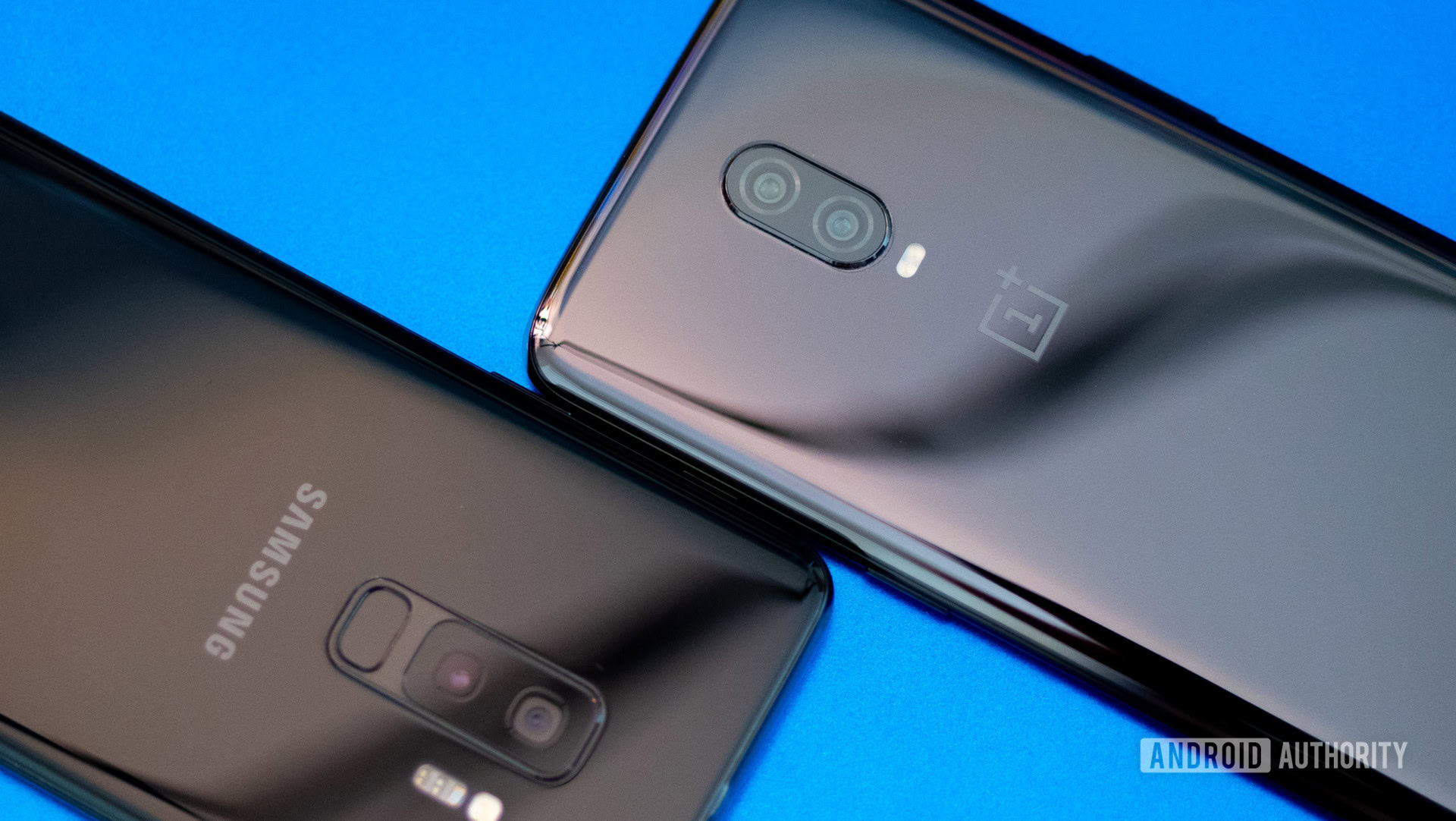
OnePlus 6T vs Samsung Galaxy S9 / Plus: Camera
On the back, the OnePlus 6T uses a 16MP f/1.7 lens, paired with a 20MP sensor for depth information, allowing for a more reliable portrait effect. Meanwhile, Samsung’s taken a completely different approach on the two S9 phones. The primary cameras on both the S9 and the S9 Plus are 12MP units with variable apertures that switch between f/1.5-2.4 depending on the setting. This means the camera can let more light onto the sensor when it gets dark and increase the aperture for regular shots. By shifting the aperture, you can also adjust the amount of depth of field.
The S9 Plus also tacks on a secondary 12MP camera with a 2x telephoto lens. It’ll allow you to get in closer to your subject without losing out on image quality.
Related: Best of Android 2018: Which phone has the best camera?
Both the OnePlus 6T and the Galaxy S9 are capable shooters. Pit against each other, the S9 consistently captures more detailed shots with lower noise levels and sharper focus. The telephoto lens on the S9 Plus kicks things up a notch and the OnePlus 6T’s digital zoom simply cannot keep up with the 2x optical zoom here.
The front-facing cameras on the S9 and S9 Plus top off at 8MP while the OnePlus 6T is equipped with a 16MP sensor. What the Samsung phones lack in resolution, they make up in image quality. Equipped with autofocusing capabilities, the Galaxy S9 and S9 Plus manage tack sharp selfies. The OnePlus 6T, on the other hand, tends to smooth out facial features, resulting in loss of detail.
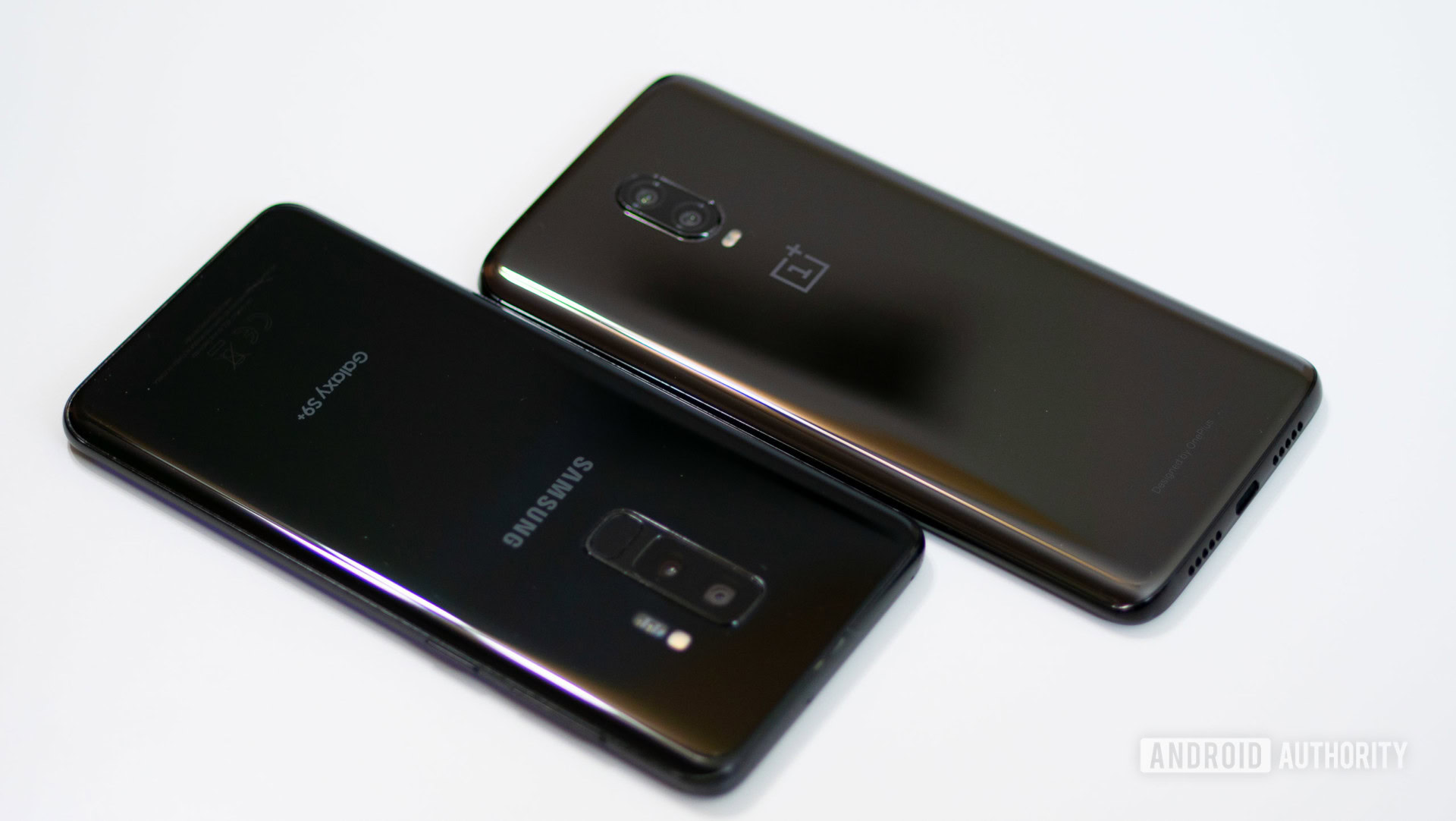
OnePlus 6T vs Samsung Galaxy S9 / Plus: Battery & features
Battery life varies quite drastically between the three phones, but as it stands, the OnePlus 6T is the winner here with its 3,700mAh cell. The Galaxy S9 ships with a 3,000mAh battery, which is understandable given the smaller dimensions. The S9 Plus has a 3,500mAh battery.
We’ve seen the OnePlus 6T achieve up to eight hours of screen-on time in a single day. The Galaxy S9 Plus can’t even get close to that.
Both the Galaxy S9 and the S9 Plus support Quick Charge 2.0 for rapid charging, but Dash Charge on the OnePlus 6T is, simply put, a league ahead. While faster solutions like Super VOOC are out there now, Dash Charge remains one of our favorite features on OnePlus devices. If you get the McLaren Edition, you get a special charger that boosts up the battery to one day’s worth of charge in just 20 minutes.
OnePlus has also put in a lot of effort in optimizing battery life with the end result being a phone that can comfortably last a day and a half or even two depending on how you use your hardware. On the other hand, the Galaxy S9 and S9 Plus manage a full day of use, but you certainly will feel the need to top them off at night.
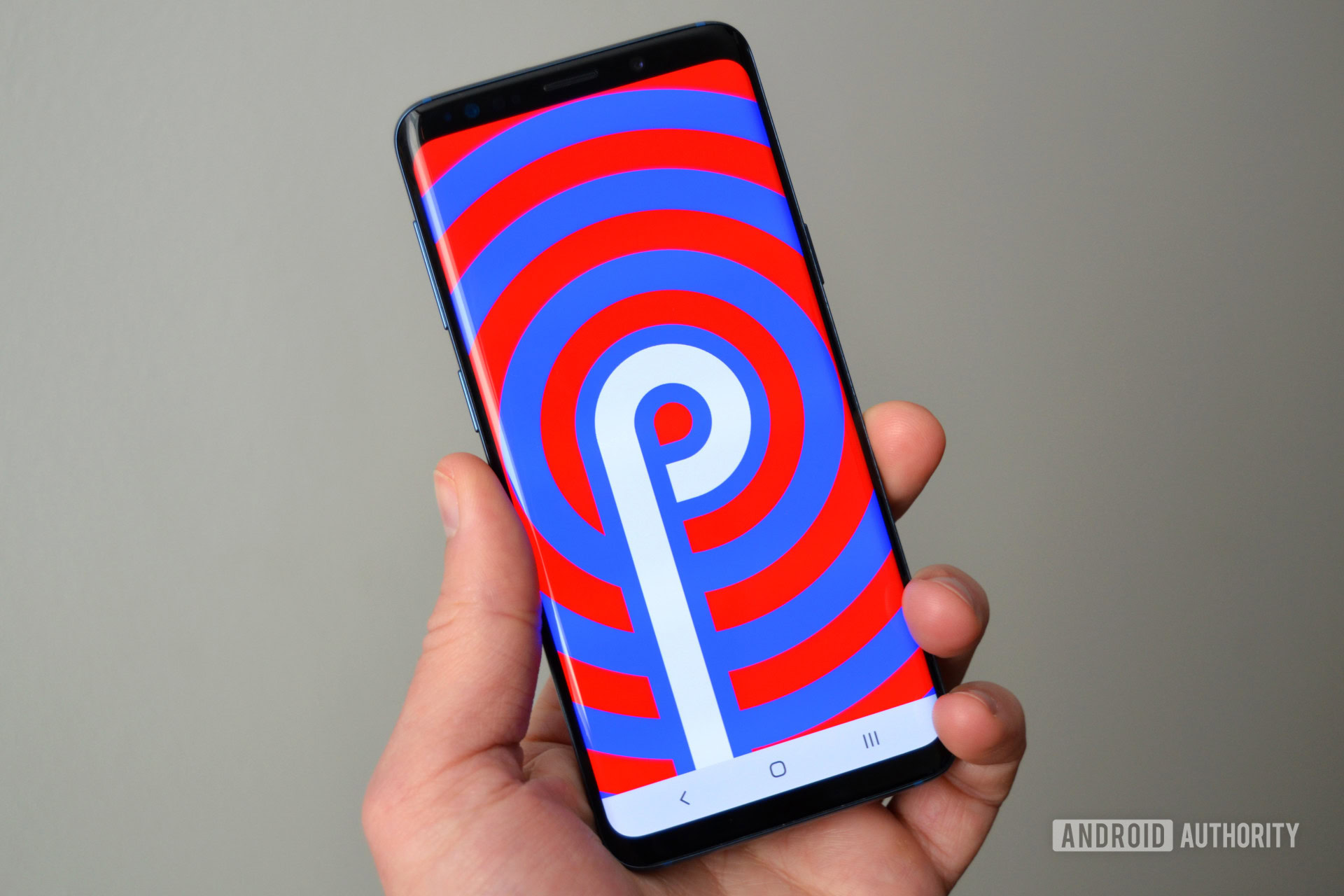
Samsung is well known for packing its phones to the gills with nifty features you might not use often, but might find handy. OnePlus on the other hand takes stock-like approach, eschewing extra features for a fast, stable, and clean user experience.
It’s not just about software features though. The S9 and S9 Plus have additional hardware for wireless charging, microSD expansion, and sensors for the iris scanner, and heart rate and SpO2 measurement. You can even use your Samsung phone as a computer of sorts, using a Dex Pad to connect it to a large display. It is a clear and absolute win for the two Samsung phones as far as features go.
One more thing: If you need a phone with a headphone jack, the Galaxy S9 or S9 Plus are the phones for you. OnePlus controversially removed the headphone jack from the 6T this year, which actually made many of its vocal fans even more vocal about the decision.
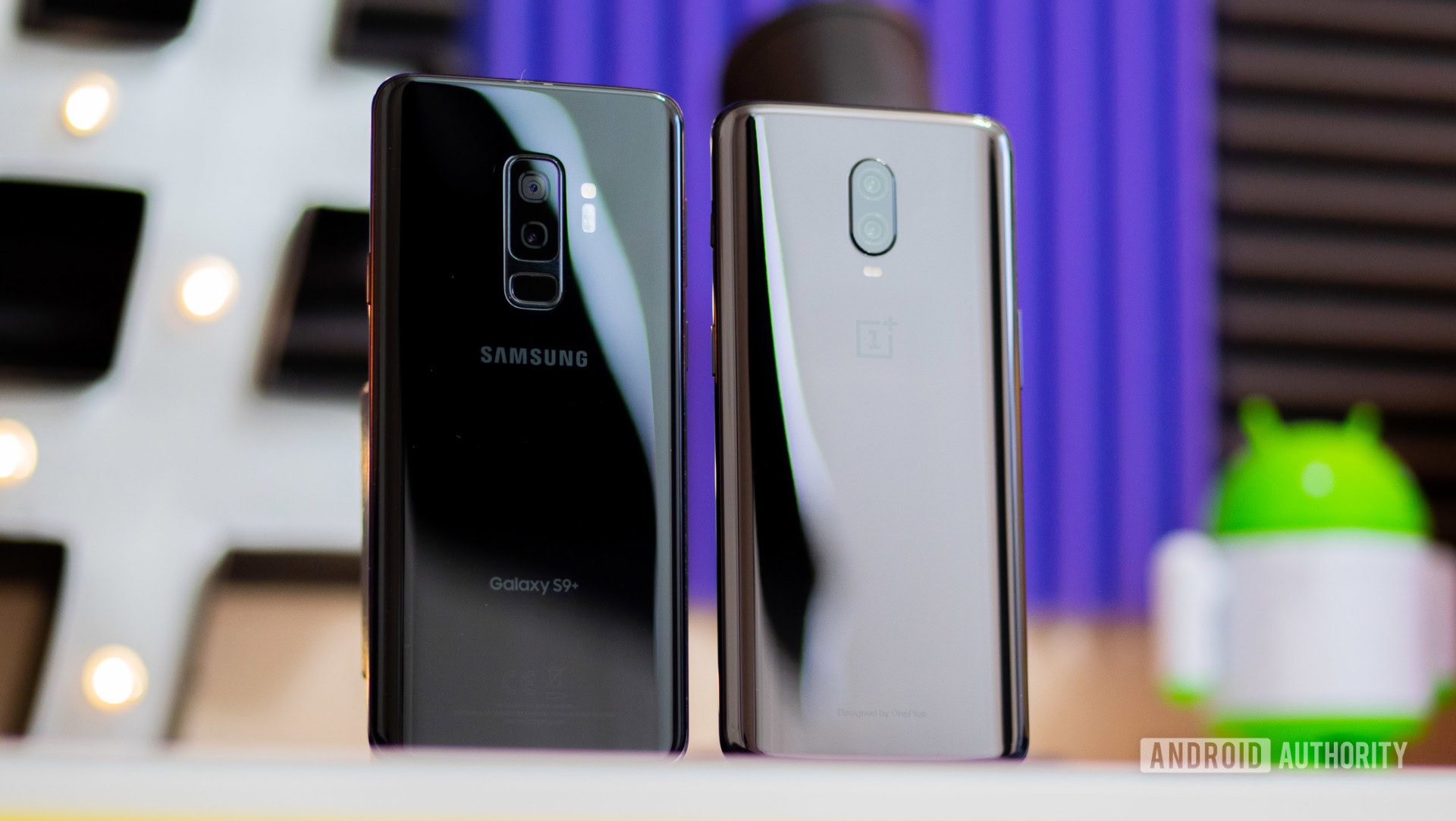
No matter which you pick, you’ll get a top of the line flagship with performance to match. Between the three, the Galaxy S9 is the obvious choice for anyone who wants a smaller phone. Things get a bit more complicated between the S9 Plus and the OnePlus 6T.
The S9 Plus gives you a better camera, wireless charging, a Dex-based desktop experience, and a headphone jack. The OnePlus 6T is a newer phone with cleaner software, a bigger battery, an in-display fingerprint sensor, and of course a considerably lower price depending on which market you are in.
What would you opt for? Sound off in the comments section and let us know.
Next: Google Pixel 3 vs Samsung Galaxy S9: Battle of the small(ish) phones